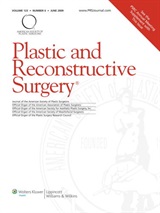The post Does Non-Surgical Rhinoplasty Really Work? appeared first on Andrew Trussler, MD, PLLC.
]]>What Is Non-Surgical Rhinoplasty?
Non-surgical rhinoplasty is a cosmetic procedure that temporarily changes the appearance of your nose using something called dermal fillers. Though it is a non-surgical procedure, it should still be performed by a professional, ideally trained in cosmetic surgery, because of the concentration of blood vessels and proximity to the eyes of the nose area.
Is Non-Surgical Rhinoplasty As Effective As Surgical Rhinoplasty?
It depends on what your aesthetic goals are. If you’re looking for a noticeable, but small change to the appearance of your nose, such as smoothing bumps, adding volume, or distinguishing the tip of your nose, then the effects can be similar. Non-surgical rhinoplasty cannot make your nose smaller, nor help you undergo more dramatic changes. Non-surgical rhinoplasties also do not last as long as surgical rhinoplasties, with most non-surgical rhinoplasties lasting about six months.
Non-surgical rhinoplasties are a great alternative to surgical rhinoplasties if you’re looking for small, volume adjustments.
What Does Recovery Look Like for Non-Surgical Rhinoplasty?
With the entire procedure taking around half an hour, the recovery of most people typically includes minor ailments such as swelling or bruising around the nose. However, unlike surgical rhinoplasties, there is no downtime and you should be able to return to your routine right away.
What Should I Do to Get a Non-Surgical Rhinoplasty?
As mentioned before, though non-surgical, you still need a trained professional and if you’re in the Austin area, you’re in luck because Dr. Tussler is board-certified by the American Board of Plastic Surgery and has a specialty in cosmetic surgery. If you’re ready to talk more about non-surgical procedures, make sure it’s with Dr. Tussler! Call us at 512-450-1077!
The post Does Non-Surgical Rhinoplasty Really Work? appeared first on Andrew Trussler, MD, PLLC.
]]>The post Common Rhinoplasty Questions appeared first on Andrew Trussler, MD, PLLC.
]]>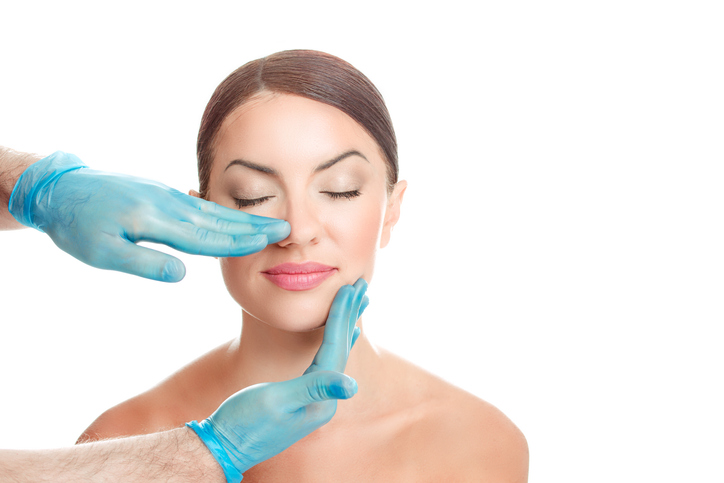
It takes a lot of consideration and courage to get a nose job. Doing so after carefully selecting an experienced plastic surgeon can be life-changing, which is why rhinoplasty continues to be a popular procedure. To help you on your journey to great facial proportions, we answer some common rhinoplasty questions here.
What does rhinoplasty do?
The rhinoplasty procedure is customized to each patient to improve the shape, size, projection, or function of the nose. While the procedure can offer medical benefits, it is typically performed for cosmetic reasons. It is not a nasal procedure, though it can correct some minor issues that affect breathing.
Does rhinoplasty hurt?
Patients receive general anesthesia when they undergo nose surgery. They feel no pain while under anesthesia and have no memory of their procedure due to the short-term amnesiac effects of the medications used. After surgery, patients can expect some swelling, bruising, and minor discomfort. Often, over-the-counter medication is sufficient for addressing this side effect. The surgeon will most likely prescribe a more potent painkiller to be taken for a few days, after which point comfort improves significantly.
Will rhinoplasty change my voice?
In most cases, a patient’s voice does not change in any discernible way after their rhinoplasty procedure. That said, people who rely on their voice for their profession, such as singers, may notice this slight change. This should be taken into account when considering the potential advantages and disadvantages of rhinoplasty.
Can rhinoplasty make my nose smaller?
Rhinoplasty can make your nose smaller if that is a goal. In consultation with patients, Dr. Trussler considers the entire face and how the nose fits with other facial features. To improve symmetry and proportion, he may decrease the size of the nose, alter tip projection, narrow the bridge, or smooth away bumps or ridges.
Do rhinoplasty results last forever?
After rhinoplasty, the nose cannot go back to the way it looked before surgery. However, the outcome of surgery may be further refined or corrected with revision rhinoplasty, if need be.
Is rhinoplasty right for me?
Rhinoplasty may be right for you if you are well informed regarding the pros and cons of this procedure and have realistic expectations about your doctor’s anticipated outcome. If you are interested in refining the shape or size of your nose to better suit your face, the best next step is to schedule a consultation with a board-certified plastic surgeon.
To schedule your appointment to discuss rhinoplasty surgery, contact our Austin office at (512) 450-1077.
The post Common Rhinoplasty Questions appeared first on Andrew Trussler, MD, PLLC.
]]>The post My Nose is Too Big: What are My Options? appeared first on Andrew Trussler, MD, PLLC.
]]>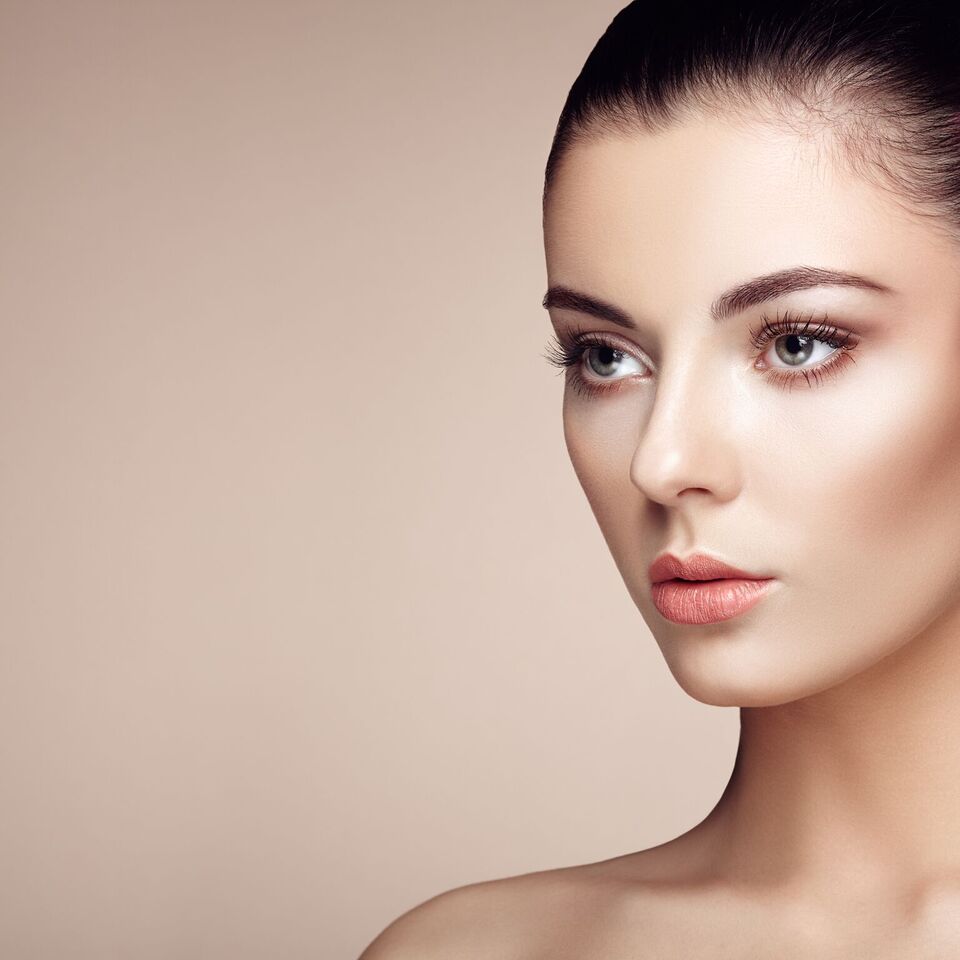 A nose that a patient may feel that is too big for their face can be reduced in size. The nose is the focal point for the face and can throw the aesthetic balance off for appearance. Any changes to the nose should be considered in three dimensions with the end goal of improving the general facial balance as well at the shape of the nose.
A nose that a patient may feel that is too big for their face can be reduced in size. The nose is the focal point for the face and can throw the aesthetic balance off for appearance. Any changes to the nose should be considered in three dimensions with the end goal of improving the general facial balance as well at the shape of the nose.
When evaluating a large nose for potential correction, the height of the nose, length of the nose and width of the nose should be considered. All dimensions can be reduced in a rhinoplasty (nose job) but should be done incrementally and in a step wise fashion. The height of the nose can be decreased by filling bone and shaving cartilage on the dorsum or bridge of the nose (dorsal reduction) and the tip can be decreased in projection by a Lipsett procedure which overlaps the central tip cartilages. The length of the nose can be decreased with shortening the septal cartilage (caudal septal resection) and rotating the nasal tip cartilage up and back. Narrowing of the nose can be performed with cutting or breaking the bone inwards (osteotomy) while bringing the middle cartilages in with sutures (upper lateral cartilage refinement). The tip is narrowed through removing bowed cartilage (cephalic trim) and then suturing it together (domal sutures). Nostrils are typically narrowed when making the nose smaller through removing the outer lower nostril skin (alar base resections).
These steps to decreasing the size of the nose can be combined with airway improvements, like a septoplasty, and the nose should be structurally reinforced with cartilage grafts. On open rhinoplasty would be the ideal procedure to accomplish this, with a very limited to no role of a non-surgical approach with fillers.
An open rhinoplasty is done in the operating room with general anesthesia and does take approximately 3 hours. It is an outpatient procedure with initial recovery of 7 days and long term recovery of 6 months to one year.
The post My Nose is Too Big: What are My Options? appeared first on Andrew Trussler, MD, PLLC.
]]>The post Rhinoplasty FAQs appeared first on Andrew Trussler, MD, PLLC.
]]>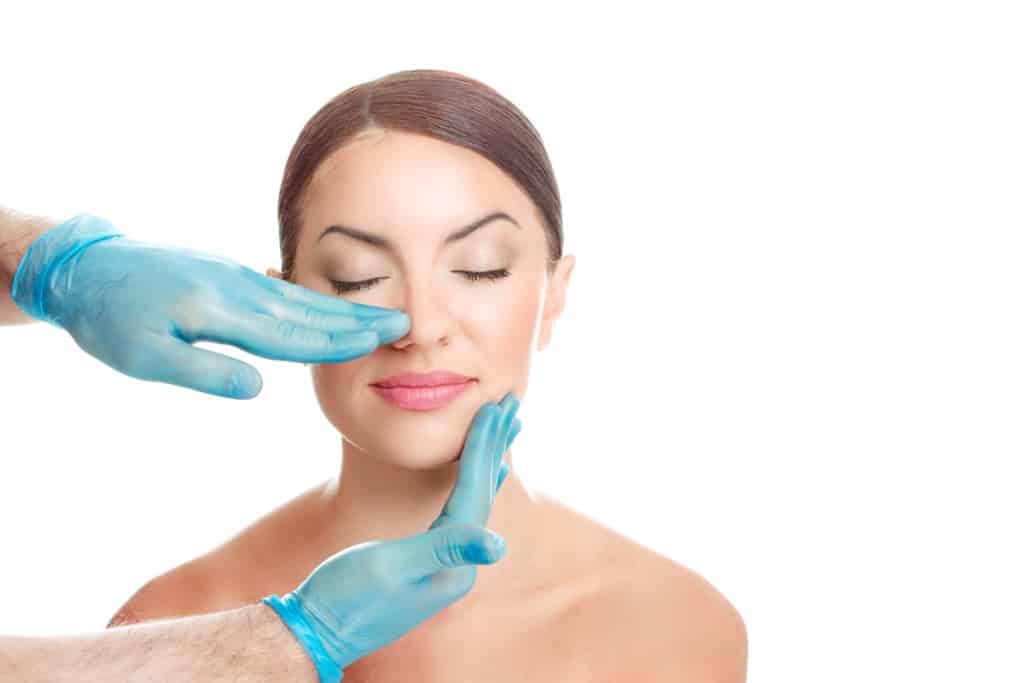
What are the risks involved with rhinoplasty?
Nose surgery is one of the original cosmetic surgeries, the first modern cosmetic nose surgery being performed around 1890. It is a very common surgery today, but it is surgery and carries certain risks with it. There are the risks involved with any surgery: infection, excessive bleeding, reaction to anesthesia, and poor healing. But specific to rhinoplasty, the risks are nasal septal perforation, difficulty breathing, skin discoloration, enduring swelling, and a lack of satisfaction with the end result.
In the vast majority of these surgeries, however, patients are happy to have a nose they finally like looking at in the mirror. The procedure carries very low risk, with a high degree of satisfaction.
When can I expect to see my full results from my nose surgery?
Once your splint is removed, you’ll see the majority of your results immediately. Swelling will delay your final results, but the majority of your swelling should resolve within three weeks. At that point, although quantifying is difficult, you’ll probably be able to see about 80 percent of your final results.
The problem is residual swelling, particularly at the nasal tip. This can take a full year to completely resolve. It can resolve earlier in some patients. Still, you’ll love most of the changes within that first month after your surgery.
Are there visible scars from rhinoplasty?
Scarring is really not an issue with these surgeries. If Dr. Trussler uses the open method, there will be a tiny incision scar along the columella on the bottom of your nose between the nostrils. This tiny scar is barely noticeable and it fades dramatically with time. If the closed method is used, all incisions are made within the nose, so there is no visible scarring.
Will I have bruising under my eyes after rhinoplasty?
Bruising is pretty much guaranteed after nose surgery because of the tissue trauma. Your bruising will be the worst from three to seven days after your surgery. It will start as deep purple color and will transition to a brownish orange before fully clearing. It’s likely that some of your bruising may track down and discolor your cheeks. Some of this depends on the extent of changes made with your nose. If Dr. Trussler only worked on the septum and/or the nasal tip, there will be only minimal bruising, if any.
Is rhinoplasty covered by insurance?
If your nose surgery, whether rhinoplasty or septoplasty (to adjust the septum, the wall inside your nose that divides the nasal passages into a right and left side), is primarily intended to correct issues with function, then insurance is likely to cover the procedure. Of course, some cosmetic adjustments can be made at the same time as structural improvements. If your reasons for this surgery are strictly cosmetic, insurance will not cover it.
Schedule a Consultation
Interested in learning more about Rhinoplasties? Visit our rhinoplasty page, call (512) 450-1077, or schedule a consultation to learn more!
The post Rhinoplasty FAQs appeared first on Andrew Trussler, MD, PLLC.
]]>The post Rhinoplasty Affects More than Your Nose appeared first on Andrew Trussler, MD, PLLC.
]]> Many people express that they don’t like their nose. Some go so far as to state they would like to have a nose job to change what it is that they don’t like. While a nose that doesn’t fit with the face can be a distractor, the idea of having a different nose can also be intimidating. Patients who are considering rhinoplasty often ask whether their new nose will make them not look like themselves anymore. The fact is, when we alter the size and shape of the nose, the face will look different. We wouldn’t say that one will not look like themselves any longer, but they should prepare to look different. Here, we discuss why that is.
Many people express that they don’t like their nose. Some go so far as to state they would like to have a nose job to change what it is that they don’t like. While a nose that doesn’t fit with the face can be a distractor, the idea of having a different nose can also be intimidating. Patients who are considering rhinoplasty often ask whether their new nose will make them not look like themselves anymore. The fact is, when we alter the size and shape of the nose, the face will look different. We wouldn’t say that one will not look like themselves any longer, but they should prepare to look different. Here, we discuss why that is.
The Direct Effects of Rhinoplasty
To get a nose job means to have your nose refined in some way. Rhinoplasty is intended for the cosmetic and/or functional improvement of this part of the face. The procedure may be performed to straighten a deviation that is affecting breathing. It may be done to reduce a bulbous tip or narrow a wide nasal base or remove a hump on the bridge. The direct effect of rhinoplasty is that the nose will look smaller, straighter, and generally more refined.
The Indirect Effects of Rhinoplasty
Although rhinoplasty only changes the internal or external aspects of one singular facial feature, the entire face may look a little different after surgery. This is because the structure of the nose relates to all other facial features. The reason why is that the nose sits smack dab in the middle of them all.
The nose is the only facial feature that projects forward. Actually, the chin does as well, which is why changing one definitely changes the appearance of the other. The nose and the chin, in fact, are most in line when they project a similar distance from the surface of the face. As the central feature, though, the nose is what sets the tone for facial dimension. The nose provides shape and structure to the profile. It is the central, harmonizing feature that brings all others together.
Before rhinoplasty, the shape and size of the nose get all the attention. Not in a good way, most of the time. When we refine the nose, it allows all other facial features to be noticed to the same degree. So, it may not be so much that the entire face changes after rhinoplasty but that the eye is now freer to observe the face as a whole because the nose no longer commands the primary spot on the face.
Are you ready for your facial features to harmonize in total beauty? Contact our Austin office at (512) 450-1077 to schedule your rhinoplasty consultation.
The post Rhinoplasty Affects More than Your Nose appeared first on Andrew Trussler, MD, PLLC.
]]>The post Failed Nose Job? What to do Next. appeared first on Andrew Trussler, MD, PLLC.
]]> Undergoing a nose job, aka rhinoplasty, is a big deal. Still, more than 200,000 Americans had their noses reshaped last year alone. You may be one of them. You may be one of the rhinoplasty patients who is looking at your facial proportions and feeling as though something isn’t quite right. The idea that your nose job was a failure can feel scary. We understand. Here, we want to discuss the issue of rhinoplasty failure, why this may happen, and what to do if you’re unhappy with the results of your initial surgery.
Undergoing a nose job, aka rhinoplasty, is a big deal. Still, more than 200,000 Americans had their noses reshaped last year alone. You may be one of them. You may be one of the rhinoplasty patients who is looking at your facial proportions and feeling as though something isn’t quite right. The idea that your nose job was a failure can feel scary. We understand. Here, we want to discuss the issue of rhinoplasty failure, why this may happen, and what to do if you’re unhappy with the results of your initial surgery.
Let’s Talk Healing
After an initial rhinoplasty, it takes as long as a year to visualize the final outcome of surgery. Swelling is most dramatic during the first month after surgery. After this time, you may have a fair idea of what your face will look like going forward. However, most surgeons recommend that patients wait a full year to consider revision rhinoplasty. Residual swelling is only one reason for this. Even more significant than the physical appearance of the nose, it is essential to give yourself time to get to know your new face. Changing the shape and size of the nose even slightly alters the way in which all facial features relate. It can take that full year after surgery to become familiar with the change.
Why Rhinoplasty may Fail
Rhinoplasty failure occurs in only 5- to 10 percent of cases. Reasons that patients may consider revision rhinoplasty include:
- The outcome of the initial procedure does not suit the face.
- Healing did not occur as expected.
- The initial procedure altered nasal function.
- Nasal trauma occurred sometime during the healing process.
It is possible that surgical inexperience may result in a failed rhinoplasty. Perhaps too much alteration took place, or not enough. Patients who are considering rhinoplasty are encouraged to ask how many nose jobs a surgeon has performed. When revision rhinoplasty is being considered, the experience of the surgeon is even more critical.
Discussing Revision Rhinoplasty
If you are considering revision rhinoplasty, we invite you to contact our office in Austin for a personal consultation. Our priority in discussing revision rhinoplasty is to understand your concerns and your desired outcome. In discussing revision, it is essential that we communicate the shape and size that you expect. Additionally, it is equally as important to talk about the relationship between the nose and other facial features. The objective of rhinoplasty is to bring a sense of proportion and harmony to the face. To achieve this takes finesse, training, expert skill, and an artistic eye.
Are you unhappy with the results of a previous nose job? Contact our Austin office at (512) 450-1077 to schedule a consultation for revision rhinoplasty.
The post Failed Nose Job? What to do Next. appeared first on Andrew Trussler, MD, PLLC.
]]>The post What You Need to Know about Rhinoplasty appeared first on Andrew Trussler, MD, PLLC.
]]> More than 200,000 people underwent rhinoplasty last year alone. This procedure, performed to reshape the nose, has consistently been among the leading cosmetic surgeries year after year. Still, there are thousands of people who would like to change something about their nose but don’t. In too many cases, procrastination has to do with misinformation. Here, we want to explain some far-fetched ideas about rhinoplasty, and how they are wrong, so you are better able to make the important decision of whether or not this procedure is right for you.
More than 200,000 people underwent rhinoplasty last year alone. This procedure, performed to reshape the nose, has consistently been among the leading cosmetic surgeries year after year. Still, there are thousands of people who would like to change something about their nose but don’t. In too many cases, procrastination has to do with misinformation. Here, we want to explain some far-fetched ideas about rhinoplasty, and how they are wrong, so you are better able to make the important decision of whether or not this procedure is right for you.
- A nose job is easy to spot. The idea that a nose that has had work done will forever look like a nose that’s had work done is based on misinformation. It is unfortunate that living proof exists to demonstrate the possible downside of going too far with rhinoplasty. However, more nose jobs turn out looking beautifully natural than obviously altered. A skilled plastic surgeon knows how to accomplish the best results.
- A nose job can be tailored any way you wish. Rhinoplasty is not a procedure to approach with a specific nose in mind. The nose is central to the overall aesthetic of the face. It must fit within the proportions and dimensions of the facial anatomy. To have a particular nose size and shape in mind misses the importance of symmetry on your unique facial structure. It is possible to find surgeons who will accommodate this request; that’s why we have living proof of bad nose jobs.
- Any cosmetic surgeon can achieve rhinoplasty success. Any cosmetic surgeon who has been trained can perform rhinoplasty; this much is true. What needs to be explored is how experienced a surgeon is. Nose jobs are not simplistic procedures. There are several nuances that need to be achieved and meticulous maneuvering that must be performed to achieve the finest outcome. Therefore, rhinoplasty is best performed by a board-certified plastic surgeon.
Dr. Trussler is a board-certified plastic surgeon who has completed specific training in the area of cosmetic surgery. He is certified by the American Board of Plastic Surgery as well as the American Board of Surgery. Facial procedures including rhinoplasty are among his particular clinical interests.
Learn more about rhinoplasty. Call our Austin office at (512) 450-1077.
The post What You Need to Know about Rhinoplasty appeared first on Andrew Trussler, MD, PLLC.
]]>The post Rhinoplasty Myths Debunked! appeared first on Andrew Trussler, MD, PLLC.
]]> Rhinoplasty, commonly known as a nose job, may be one of the most common plastic surgeries in the world today, yet many people still have misconceptions regarding the procedure. Word of mouth can spread like wildfire, and false information has greatly affected the way rhinoplasty is perceived by some.
Rhinoplasty, commonly known as a nose job, may be one of the most common plastic surgeries in the world today, yet many people still have misconceptions regarding the procedure. Word of mouth can spread like wildfire, and false information has greatly affected the way rhinoplasty is perceived by some.
If you are considering a better-looking nose, don’t let these misconceptions get in the way of your dreams; separate fact from fiction!
Myth: Rhinoplasty uses plastic materials.
When people say “plastic surgery” some individuals take the term way too literally, thinking that cosmetic surgeons use plastic parts to enhance the contour of the nose. The materials that are inserted in the nose to achieve its desired shape are made of either synthetic or biologic materials. A common material used is silicon. The conventional plastic you are familiar with is never used during the procedure.
Myth: Patients who have been under rhinoplasty have “fragile” noses.
A fragile nose is a common misconception when it comes to rhinoplasty patients, especially those who have been given bridge implants. The truth is that patients may be able to return to their daily routines and activities without needing to worry about destroying the results of their surgery with the slightest touch. However, it may help to observe the placement of the bridge, which will be noticeable once the swelling subsides.
Myth: Nose implants can melt.
This myth may sound silly, but there are some people who are concerned it may be possible. Certified clinics use rubberized silicon nose implants in rhinoplasties, protecting a newly-shaped nose from undesirable changes in extreme conditions.
Before getting a rhinoplasty, it is best to do your research, and we’re here to help. With all these myths looming around, it is better to get your questions answered during a consultation.
To get rhinoplasty facts straight from the expert, call us today to schedule your rhinoplasty consultation with double-board certified plastic surgeon Dr. Trussler. We’d love to hear from you!
The post Rhinoplasty Myths Debunked! appeared first on Andrew Trussler, MD, PLLC.
]]>The post Re-Shaping the Nostril: Correcting the Cookie-Cutter Nose Job appeared first on Andrew Trussler, MD, PLLC.
]]>The nose has multiple functions, with the main being breathing. There are two components to the nasal valve, an external component and an internal component.
- Internal Valve: After trauma, previous surgery, and with septal deviation the internal valve can be affected.
- External Valve: The most common cause of external valve collapse is previous rhinoplasty specifically over resection of the cartilage in the nostril.
The nostril is made up of cartilage (lower lateral cartilage) sandwiched between skin and nasal lining. The nasal skin can be thick and stiff providing a significant amount of external nasal valve support or the skin can be thin. Likewise the cartilage within the nostril can be thick or thin.
Ignoring skin and cartilage quality in a “cookie-cutter” rhinoplasty (nose job) can lead to significant deformity and external nasal valve collapse.
- Cookie-Cutter Rhinoplasty (Nose Job): Dorsal Rasping, Cartilage resection, Cephalic Trim and Tip sutures
What causes external valve collapse and nostril deformities?
- Over resection of lower lateral cartilage or a cephalic trim as part of a closed rhinoplasty (nose job)
- Cartilage grafting with on-lay free grafts
- Tip suturing on stiff cartilage causing bowing
- Closure of the nasal incisions causing alar rim notching
Common Nostril Deformities Include:
- Notching of the nostril shape, this should be a smooth shape with a rounded dome, collapse causes an angle at the dome
- Reverse S secondary to weakening of the cartilage, or suture and/or grafting on the cartilage causes it to bow into the airway
- Collapse from over resection of the lower lateral cartilage in a Cephalic Trim
External Valve collapse impedes the airway with airwflow because instead of opening with inspiration it collpases and gets sucked in with nasal air flow.
Correction involves identification of the issue which is usually only identified at the time of the secondary rhinoplasty. It is imperative to discuss goals of the secondary rhinoplasty procedure before hand with Dr. Trussler in Austin Texas.
- Ideal shape is individual and derived through facial and nasal analysis.
When should I consider a revision rhinoplasty (nose job)?
Typically wait one year after the rhinoplasty to have a revision or secondary procedure. This allows for softening of the scar tissue in the nose so that the layers of the nose can be identified and structures freed for the scar tissue
How is the nostril shape corrected and collapse prevented?
- Identification of the problem in the pre-operative or operative period.
- Scar Release of the tethered skin
- Skin grafts for over resection, if scar release is not enough
- Cartilage Grafts:
- Lateral crural strut grafts. A long strip of cartilage is placed from the nasal dome to a pocket within the nostril to help straighten and support the nostril
- Alar strut grafts which are more anatomic and sit under the native cartilage which is more appropriate for thicker cartilage
- Alar rim grafts placed in the nostril edge to help prevent alar notching.
- Cartilage for the lateral crural and alar strut grafts can be harvested from the septum via a septoplasty or septorhinoplasty if it is available
- Ear cartilage is not stiff enough
- Rib cartilage can be harvested through an incision in the chest fold with minimal scarring
Turnover grafts can be used if there is available nostril cartilage. Dr. Trussler in Austin Texas has published an article on this technique often used in primary rhinoplasty
Nostrils can be narrowed with alar base excisions
Nasal tip suturing and positioning can have an effect on the nostril shape
Recovery after secondary rhinoplasty (nose job) is similar to any rhinoplasty with one week for sutures and splints
- Swelling can be persistent and may take upwards of 3 months to one year for resolution of swelling.
Andrew P. Trussler MD is an experienced plastic surgeon in Austin Texas with advanced training in complex rhinoplasty including secondary rhinoplasty, including cartilage grafting with costal cartilage for secondary deformities.
Dr. Trussler’s Austin plastic surgery office can help guide you in correcting commonly seen issues after rhinoplasty in Austin including nostril deformity and external and internal ansal valve collapse. Secondary rhinoplasty can help your nose not only look better, but function better.
The post Re-Shaping the Nostril: Correcting the Cookie-Cutter Nose Job appeared first on Andrew Trussler, MD, PLLC.
]]>The post The FaceTime™ Nose Job: Changing the shape of the nostril appeared first on Andrew Trussler, MD, PLLC.
]]>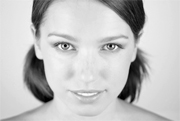
Nostril asymmetry is common and is identified primarily looking from a worm’s eye view. This view is partially mimicked in looking down at your own image while you interact on visual platforms like FaceTime .
.
Selfies have put an emphasis on changing the side profile of the nose and the chin, but FaceTime may be drawing attention to a feature that is not often discussed, nor are the options for correction commonly known.
may be drawing attention to a feature that is not often discussed, nor are the options for correction commonly known.
- Common complaints are crooked nostrils, misshapen nostrils and nostrils that are too big and or too long.
What is the ideal shape and size of the nostril?
- The ideal shape and size may vary with gender and race.
- The ideal shape is oval and size should be balanced with the face and the nose.
- Two nostrils should take up 2/3 of the nasal base, with a gentle gull wing upper contour with a slight arch.
- The ideal nostril should not flare beyond the inner eye line and should be the appropriate width for the face.
- There should be no notching in the nostril.
What is the nostril made up of?
- Skin: externally and internally with nasal lining behind the border of hair growth
- Cartilage: lower lateral cartilage with central medial crural foot plates are enveloped with skin. Malposition of the lower lateral cartilage can cause nostril asymetry.
- Central medial crus does interact with the septum and asymmetry can be created through a deviated septum
What causes nostril imbalance?
- Congenital: the patient is born with unbalanced nostrils
- Scar: trauma (broken nose) or piercings can commonly lead to notching and tethering of the nostril skin.
- Septal deviation: can lead to nostril asymmetry
- Previous Rhinoplasty: the nostril support can be weakened with some common maneuvers in rhinoplasty (cartilage resection or a cephalic trim) that can lead to nostril narrowing and collapse.
Identification of nostril asymmetry is one component, but being able to correct a nostril shape issue can be challenging. Alteration of the nose, including the nostril is a common component of rhinoplasty (nose job). Dr. Trussler in Austin Texas has advanced training in cosmetic rhinoplasty and significant experience in secondary rhinoplasty.
Options for correction of nostril shape and size:
- Lift the outer inner edge of the nostril
- Add skin for a retracted and notched nostril
- Add support with cartilage grafts (lateral crural strut graft or lower lateral turn-over grafts)
- Narrow the nostril with cartilage resection and nasal tip sutures
- Decrease the size and flare of the nostril with alar base resections
- Correct septal deviation
- Grafts can be added to help support the nostril.
Recovery from a rhinoplasty or nose job can be about one week with the initial result seen at the one month period with the final result at the one year point. A consultation with Dr. Trussler in his Austin Texas plastic surgery office can help define what options there are to help refine the nose including the nostril shape.
The post The FaceTime™ Nose Job: Changing the shape of the nostril appeared first on Andrew Trussler, MD, PLLC.
]]>
